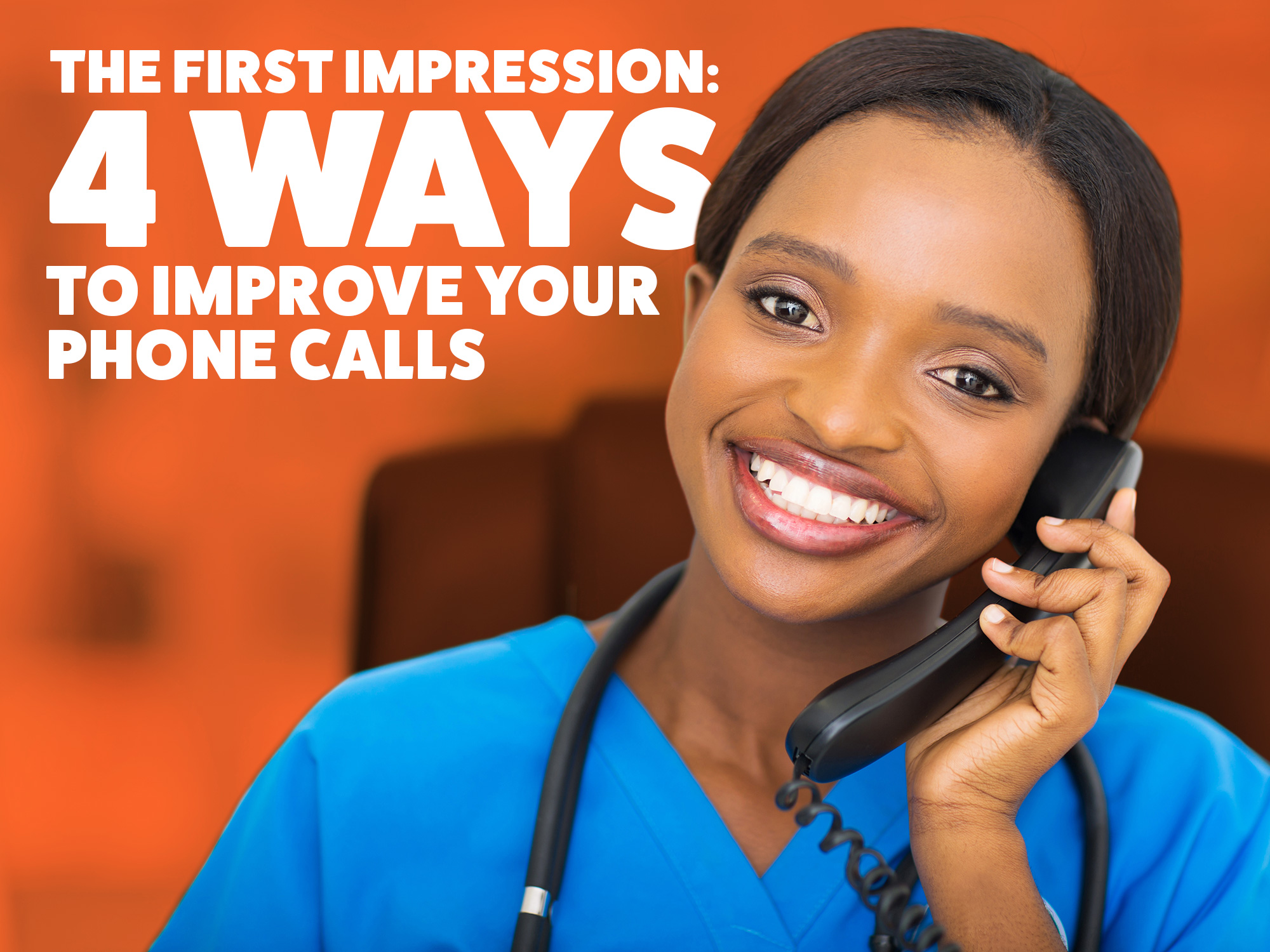
Phone calls made to your medical practice is your first chance to make an impression and to secure the caller as your patient. Ironically, phone lines are one of the biggest problem areas in a practice. Long wait times, missed calls, wrong departments — the list goes on. Inadequate phone etiquette is costly in terms of patient satisfaction, which leads to bad reviews and high customer attrition rates. Here are five ways your practice can improve the quality of your phone calls.
1. Review your phone tree options
As your practice makes changes and improves processes, or simply if it’s been a while, it may be a good idea to review your phone tree options. When there are too many options, callers may become impatient and choose the wrong department because they want to get to a live person sooner. On another note, when the options are too specific, your callers could get confused and end up in the wrong place as well.
Review your phone tree options periodically with this in mind: “How user-friendly is my phone tree?” Avoid unnecessary transfers, wasted time, and unhappy patients by keeping it simple and to the point.
2. Appointment Scheduling
Many practices have policies in place where appointments cannot be made in advance, cannot be made in person, etc. A standard response from the receptionist is usually, “Give us a call.” This type of policy not only relinquishes the chance to secure a returning patient but also results in more work to be done in the future. The inflexibility is also an inconvenience to your customer. All of these negative consequences stem from a counterproductive policy.
Instead of holding on to irrational processes such as these, adapt to what is convenient for the patient, and what is convenient for the staff. You could, for example, develop appointment templates that extend a minimum of three months, which will give your practice a better picture of what your quarter will look like instead of having to go on a monthly basis. Another way to save time for both you and your patient is to give them the option to make their appointments on your website. This will eliminate a percentage of your callers, allowing more pressing calls to be accommodated faster.
3. Speak your patient’s language
It’s easy to forget that your patients are not familiar with the medical jargon you use every day. It may be difficult for them to navigate through the phone options or understand your staff. That said, avoid the use of technical terms in your phone tree, and train your staff to give the callers context when medical jargon is unavoidable. Speaking to your patients in a language they understand promotes effective communication.
4. Extend your hours of coverage
Considering that 50% of potential patients do their research outside of work hours, you may want to look into extending your hours of coverage. Doing so allows you to capture more potential patients, especially that your competitors are closed. Additionally, you are able to accommodate more needs from your existing ones, leading to better patient satisfaction.
Your phone lines are an imperative part of your practice. It’s where you make your first impression. Make it a good one by taking the necessary steps to ensure your customers feel like they are receiving VIP (Very Important Patient) treatment.